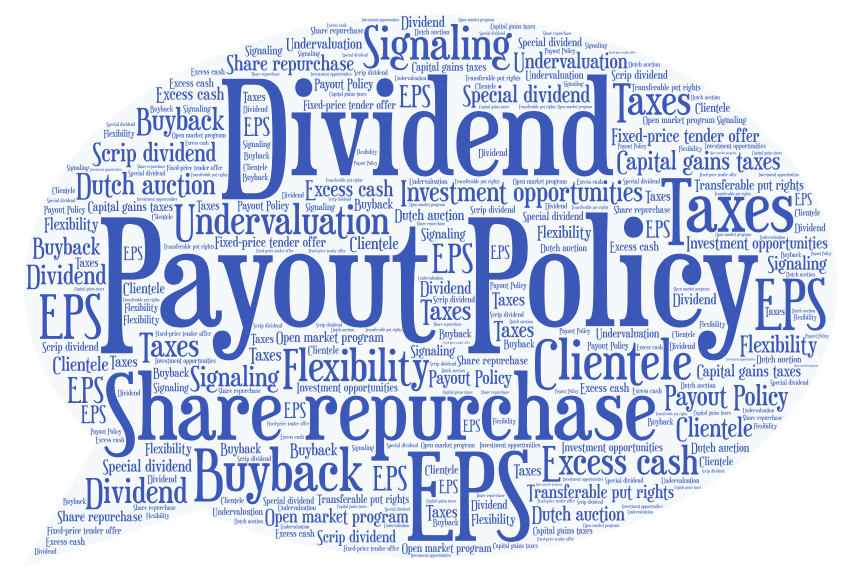Module Structure
Completion requirements
This module takes a closer look at one of the core elements of the firm's financial policy: the Payout Policy. The main purpose of the module is to present a systematic approach for managers to navigate the two key questions surrounding the payout policy: How much money should the firm return to its shareholders? And how should cash be returned?

The module proceeds as follows:
- This introductory section motivates the topic and provides a broad overview of the relevance of corporate payout.
- Payout Basics gives a brief overview of the two main forms of distribution: Dividends and share buybacks. We discuss the various types of dividends and buyback methods and take a look at some important tax implications.
- The Irrelevance of Payouts: Next, we switch to a very stylized world in which we study the basic mechanics of dividends and share buybacks. We learn that, in such a stylized world, payout decisions are irrelevant.
- This allows us to better understand when and how payout decisions are actually relevant. The Relevance of Payouts takes a closer look at how payout decisions are related to the firm's investment opportunities and under which circumstances a dollar held inside the firm is more or less valuable than a dollar held outside the firm.
- Once we know the situations where payout decisions matter, the logical next question is how firms should return money to their shareholders. The section Dividends vs. Share Repurchases discusses the key advantages and disadvantages of the two most important forms of corporate payouts.
- That section will show that buybacks have several advantages over dividend payments. Yet many firms still rely on dividends. The section Why do Firms Pay Dividends therefore inquires into the potential reasons why that might be the case.
- Finally, we bring all these considerations together and present a structured approach Towards a Payout Policy. We also discuss the interlinks between the firms investment policy, financing policy, and payout policy and their relevance at different stages of a firm's lifecycle.
For each topic, there is a reading assignment, followed by some review questions and practice examples.
Last modified: Monday, 12 November 2018, 8:26 AM
